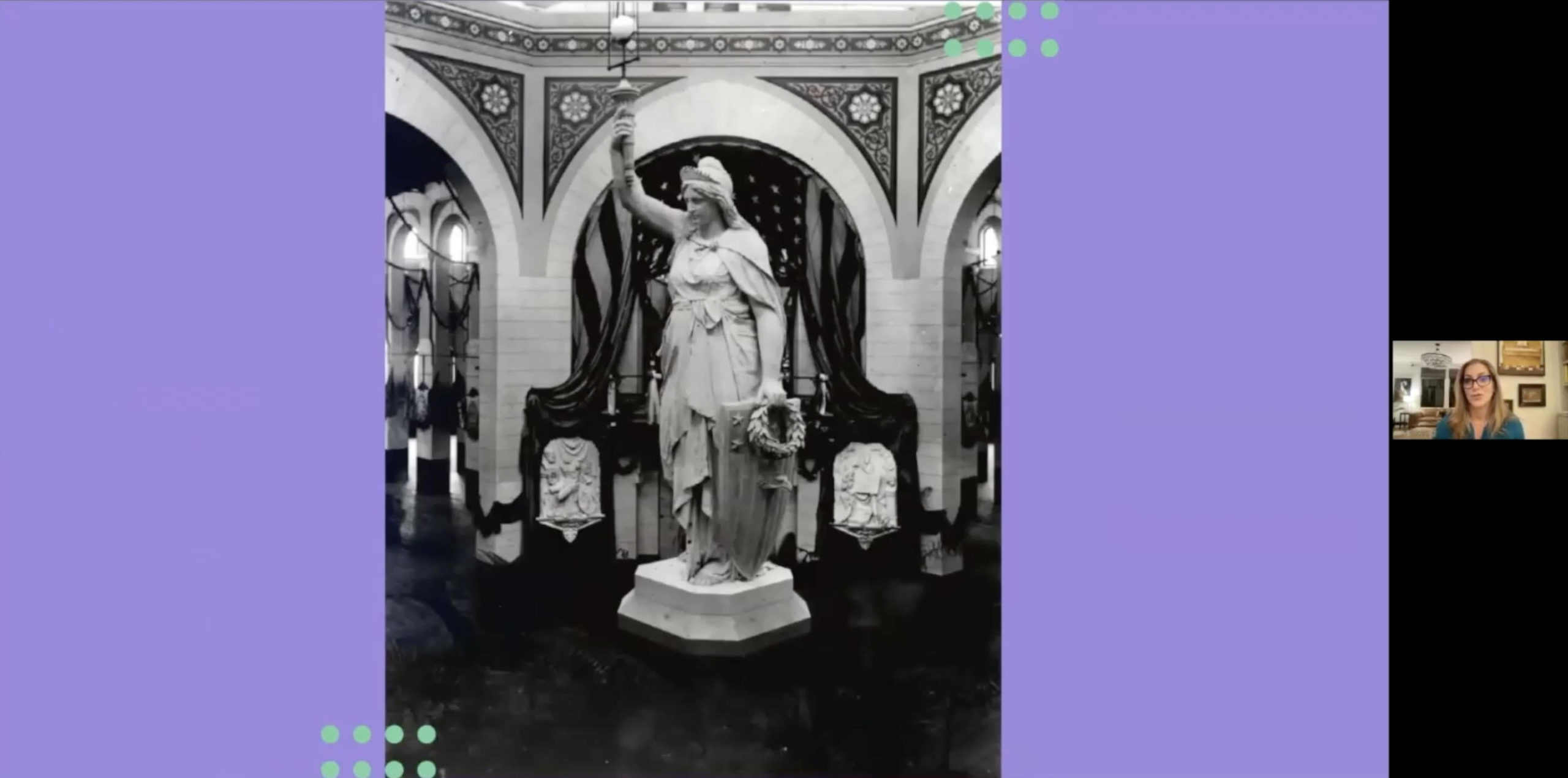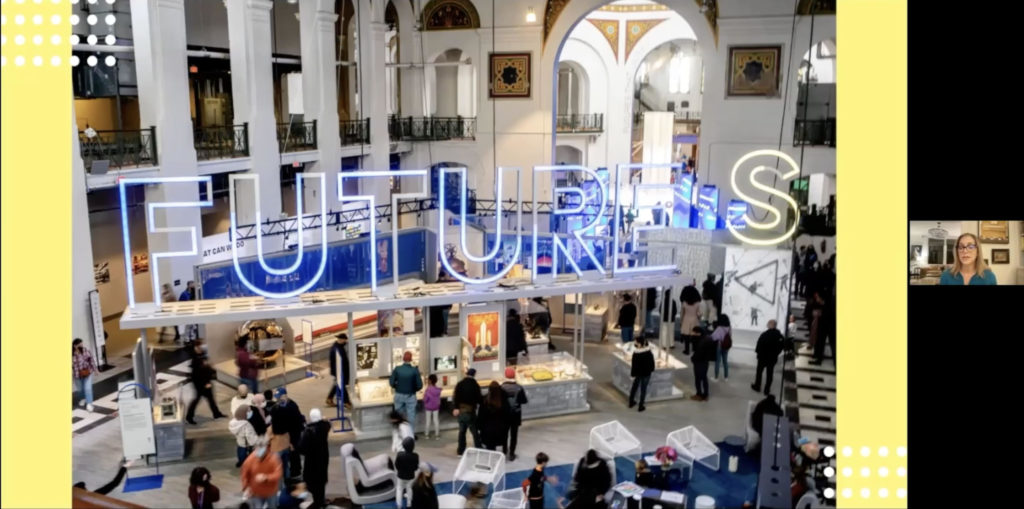
On December 2nd, 2021, the Washington Conservation Guild was honored to receive as speaker the Smithsonian Arts and Industries Building director, Rachel Goslins. Before joining the Smithsonian, Goslins worked for six years with the White House as the Executive Director of the President’s Commission on Arts and Humanities (a cultural advisory commission for President Obama).
Goslins started her talk by enlightening the audience with the history of the Arts and Industries Building (AIB), one of the most exquisite surviving 19th-century buildings of the world’s fair architecture. It was made in Renaissance revival style and became the second Smithsonian building. Its first public event was held in 1881 for the inauguration ball of President James Garfield. Current AIB staff suspect that this event was significant, since it marked the first time that the citizens of D.C. saw electric light. A marble sculpture of “Columbia/Lady Liberty” (one of the representations of American in human form) raises a fire torch with her right hand; the torch held the first electric bulb on display at the rotunda of the building (Fig. 1). After that moment, the AIB became the place where the most significant USA treasures, newest technologies, and ingenious ideas were kept. The building became known by three nicknames: the palace of invention, the mother of museums, and the brick tent.In September 1969, a few weeks after the first man had landed on the moon, the AIB accessioned a lunar rock, which brought amusement to young and old generations. The last building-wide public exhibition was in 1976, in the recreation of the Philadelphia World’s Fair; the AIB did continue to have smaller-scale exhibitions and public displays up until its closing in 2004. It was forced to close due to safety concerns, after the collapse of another building designed by the same architect. After extended negotiations with the U.S. government, the renovation of the historic roof and replacing of almost all 984 windows finally started. Nevertheless, a significant renovation of the building and its revitalization is still pending. In summer 2016, Goslins was appointed as the director of the AIB (a position that did not exist for 75 years) to act regarding the future of the building.

With the upcoming 175 anniversary of the Smithsonian Institution, Goslins—in consultation with the Secretary of the Smithsonian—proposed the concept of Futures: the first public exhibition in the AIB during the past twenty years, inaugurated on November 20th , 2021. Futures is not the typical futurist exhibition full of technology that one might expect; instead, it is an exhibition about people. Futures encourages the public to think about the future in ways that allow them to feel more empowered, inspired, and helpful. The exhibition is divided into four halls: Futures Past, Futures that Work, Futures that Inspire, and Futures that Unite. So far, the exhibition is a total success, receiving much positive feedback from audiences that have experienced a mixture of science, technology, and art. The talk concluded with a Q&A session and Goslins’ invitation to visit the AIB and the Futures exhibition.
Summary by: Katherin Daza-Cañon, MA student in Preventive Conservation at Northumbria University Newcastle (U.K.) and intern at the Smithsonian American Art Museum/Lunder Conservation Center.
Meeting venue: Virtual
Attendance: 31 participants